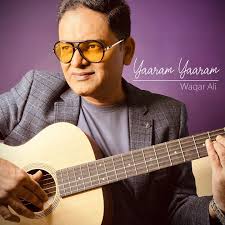It was one of the last few warm summer days and my day off, a Saturday to be exact, I had finished writing a rough draft for Annie Ki Ayegi Baraat and almost completed my long overdue Mangoes Review when my phone’s shrill ring took my attention away from the computer screen and J, my co-editor for a recent shot of a short film for a non-profit called. Our conversation flowed something like this after greeting formalities.
“I had a visit from Anne today and you can guess what she did?”
“What did she do now?”
“She made me edit those scenes; you know the ones you didn’t want cut so they fit at a 3 minute slot”
“But it is marked as an essential scene and you know how big of a deal the marketing department and director’s board is going to make, if we cut that part-”
“Then what would you suggest we do?”
In my heart I suggested lets tar and feather Anne but I acted more diplomatically and suggested a proper meeting between editors, the board of directors and our producer, Anne so certain things could be made clearer and we weren’t cutting the film in places where the audience might be lost. After that to calm myself and prepare for the explosion at the meeting, I went for a run and the only word that kept on coming to my mind was: bureaucracy. The producer wants this, the directors want that, the writers are mostly thrown aside, the editors don’t have much of a say since they have to follow the orders from directors and then the producers suddenly think they can profit on something and try turning the whole thing the other way around. As amazing has film making or post production sounds, it’s as riddled with bureaucracy from top to bottom and sometimes, egos can destroy a lot more in the process of this system.
So I decided since Annie has been long over and so is Mangoes, why not write about something more relevant that we have all been discussing lately: the fiasco of horrible dramas! Dramas that can go on forever without making any sense because the producers decided they can cash on the popularity of a strong cast whose could not save the drama since the script seem to have been written for a 2 hour film. Of course it’s also idiosyncratic to blame everything on producers. Like any other collaborative project, filming or shooting is also a team project and the best productions are those where the teams works in sync with each other.
I wanted to write a blog about behind the scene technical things, some of the frustration and some interesting tidbits the general public might not all be aware of! You guys are more than welcome to add your own thoughts or questions. I am not an expert by any chance since I believe that one can never be an expert since filming and project management are always continuous learning processes.
I am going to divide this blog in few parts. Today’s topic: Camera Setup and why sometimes it can take up to 9 hours to shoot 4 scenes! Other topics I can cover in coming blogs are Music and Sound Issues, Makeup, Post-Production, A day on a set etc. Of course my experience and the way I have studied and applied most of these things might be completely different then they are done but you guys are more than welcome to add your own questions in here!
The Myth: Multiple Cameras are used by the cinematography team to film from different angles.
The Truth: Production houses, especially our Pakistani TV industry have limited resources to provide each filming or shooting team with multiple cameras. The use of multiple cameras’ to shoot is mostly reserved for large scale productions or films. For example I need to depict a conversation between two people. As a cinematographer I have several choices I could use Long Shots, Close up Shots etc. without going into detailed technical vocabulary let’s look at an example from infamous scene in Humsafar and see how this is applied:
In the first part of this particular scene, there is no change in angles as the scene has been taken in one shot. But the second part of the scene where Khirad and Ashar arrive at party, there is focus on the car, then Ashar and then Khirad. This indicates that this scene was shot three times (and if you add in retakes then this scene all together must been shot 5-6 times), one with focus on each one of the characters expressions.
A continuity director is usually present on a set. His or her job is to ensure that the dialogues said during these multiple takes are exactly or pretty much the same and actors don’t deviate too much when they restate their lines. In the post production room, the editor then takes the best shots or what he or she feels are best expressions, dialogues spoken, placement of particular scene in the overall drama and the chooses the best parts from these multiple shots. Usually in dramas, the focus (or close up shots) last about 10-15 seconds each between switching to another character and are constantly interrupted by long, pan or zoomed out shots.
Therefore the editor has a huge responsibility on their shoulder to ensure they provide us with the best scenes they can stitch together. The best editing or post production work occurs when the director sits with the editor and ensures the placement of angles and directs the editor, instead of leaving all the raw files with him or her to sort out.
This is why in particular some long scenes or some scenes in general take more then 2-3 hours to film. If you are shooting in extreme weather, also add in time taken to re fix makeup or clothing issues. The lighting is a whole other issue that cinematographers have to deal with especially during angular shots. That is why in some scenes we see better acting and as the day progresses, the actors do become tired and might not deliver the best dialogues or expressions due to fatigue.
You can imagine why Saarmaad is so fascinated by mirrors and he shoots particular scenes with characters facing the mirror. You get both the characters expressions and this saves you doing multiple shots plus you get a bonus artistic touch tadaaa…kitna smart admi haina bahi!
Post Production Editing: As I have not had the pleasure to work on Pakistani Dramas i cannot comment from experience but it seems like each episode is edited prior to it being aired on TV. that is why we always see some scenes in promo’s, however the producer the director might request or ask the editor to change, remove or add scenes. For example Humsafar’s episode 7 promo showed the line “outspoken honay main aur batameez honay main buhat farq hota hai” but the line never made the final cut in the next episode. Some directors however like full control of their end product and will ensure each and every episode is edited prior to the drama’s release on TV. e.g. from what i can tell all of Durr-e-Shewar was edited before, instead of an editor sitting down and piecing sequences every week.
Until next time folks! Happy watching!
I sincerely wanted to thank SZ for encouraging me to write about my experiences and also Faraz, Fatima, Sadaf and SZ for all their encouragement to publish it!





 Watch our full review
Watch our full review



 BHASHAILI (ADRIFT) — A powerful documentary
BHASHAILI (ADRIFT) — A powerful documentary

 Feroze Khan and Ayeza Khan are back, and Humr
Feroze Khan and Ayeza Khan are back, and Humr

 Out Now: Farewell Karachi
by Bhawana Somaaya
Out Now: Farewell Karachi
by Bhawana Somaaya



